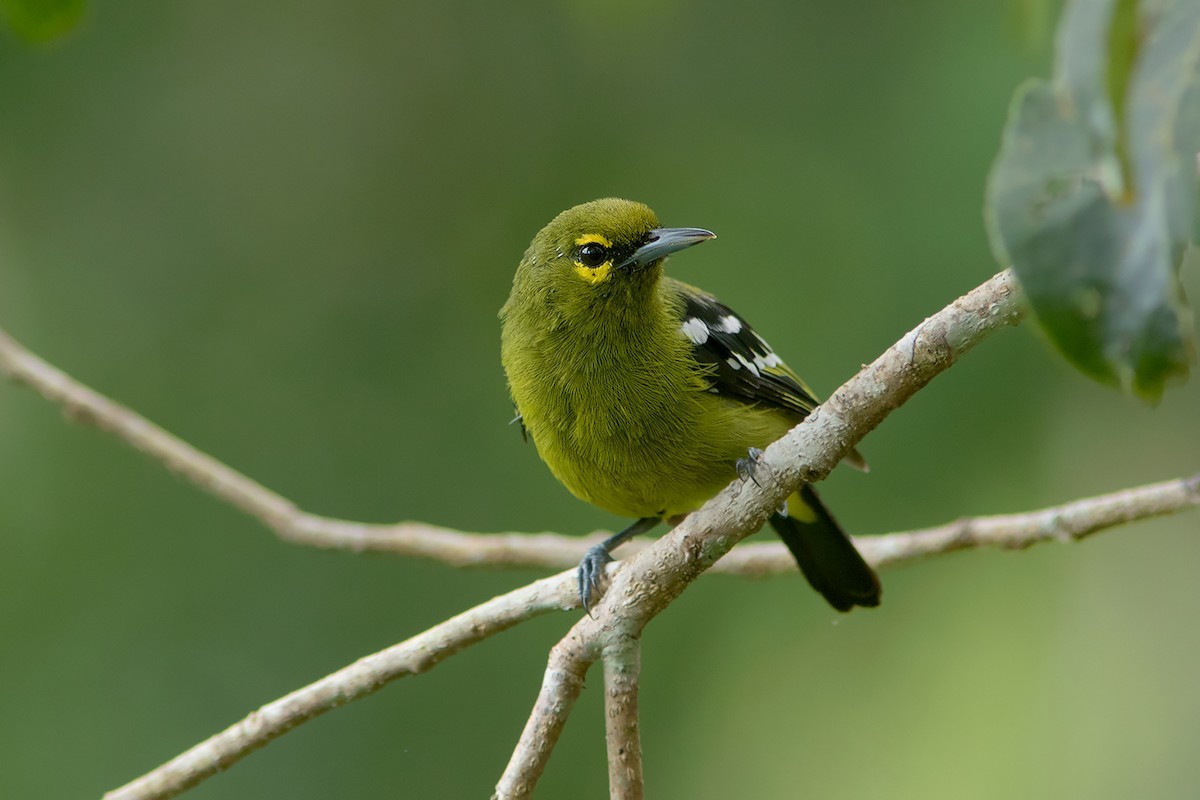Green Iora
A species of Ioras Scientific name : Aegithina viridissima Genus : Ioras
Green Iora, A species of Ioras
Botanical name: Aegithina viridissima
Genus: Ioras
Content
Description General Info
 Photo By Ayuwat Jearwattanakanok
Photo By Ayuwat Jearwattanakanok Description
The green iora is 12–14 cm (4.7–5.5 in) long. The male has black lores and bright yellow "eyelids" (a broken eye-ring). The face and upperparts are dark olive. The wings are black, with two white wing-bars on the covert feathers and olive-yellow margins on the flight feathers. The underparts are also dark olive, with lighter flanks and a yellow centre belly. The tail is black. The eyes are dark to red brown, the beak is grey-blue, and the feet are slaty blue. The female has yellow lores and a complete eye-ring. The upperparts and tail are medium olive. The wings are similar to those of the male but are washed olive, and the wing-bars are yellow instead. The underparts are olive green, with a yellow tint on the centre belly. The juvenile bird is similar to the female, but is paler. 
Size
13 cm
Nest Placement
Tree
Feeding Habits
Green Iora primarily consumes invertebrates, including caterpillars, foraging in foliage and at fig crops. It feeds young with caterpillars, often foraging in pairs or small groups, and frequently joins mixed-species flocks.
Habitat
The green Iora typically inhabits the canopy of lowland evergreen rainforests, including peatswamp-forests and white-sand pole-forests. It is additionally found in tall secondary forests and overgrown plantations of rubber, Albizzia, and cocoa shaded by Trema orientalis. The species extends into mangrove forests in broader geographical regions within its range.
Dite type
Insectivorous
General Info
Feeding Habits
Bird food type
Behavior
This iora often occurs in pairs or small groups. It feeds on invertebrates, regularly joining mixed-species foraging flocks. The contact call is a whining, descending ji-sheur or ji-wier, and a ji-jirijiri-jeh mating call has been recorded. The green iora is usually sociable, but intense fighting has also been observed. Breeding has been recorded in April and May. The cup-shaped nest is built on a tree 8–12 m (26–39 ft) above the ground. Both the male and female incubate the eggs, and nestlings are brooded in rainy weather. Moulting has been recorded in July and August. 
Distribution Area
This species is found in Tenasserim, the Thai-Malay Peninsula, Sumatra, Borneo and some small neighbouring islands, and it is locally extinct in Singapore. It lives in the canopy of lowland forests up to 820 m (2,690 ft) in elevation, and is also found in tall secondary forest, peat swamp forest and mangrove forest. 
Species Status
The population is probably declining because of habitat loss caused by logging and land conversion. The IUCN Red List has assessed it as a near-threatened species. 

 Photo By Ayuwat Jearwattanakanok
Photo By Ayuwat Jearwattanakanok